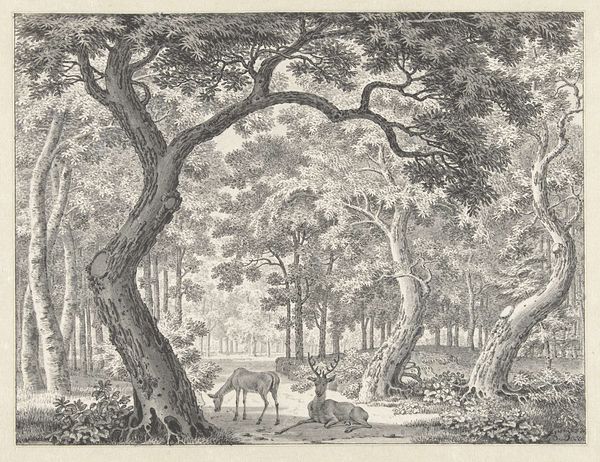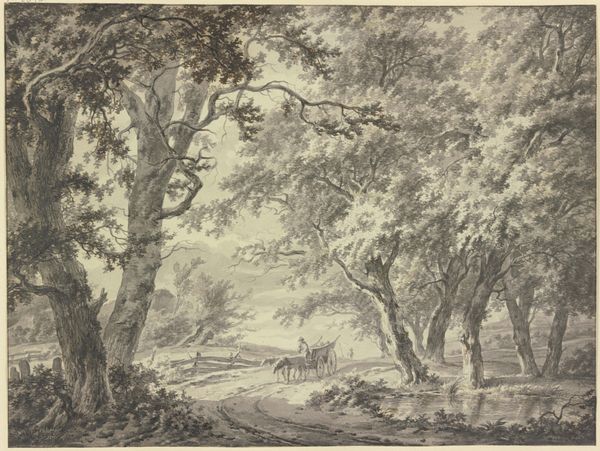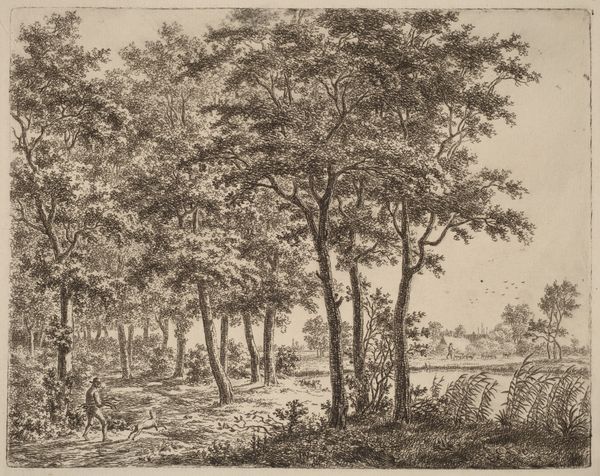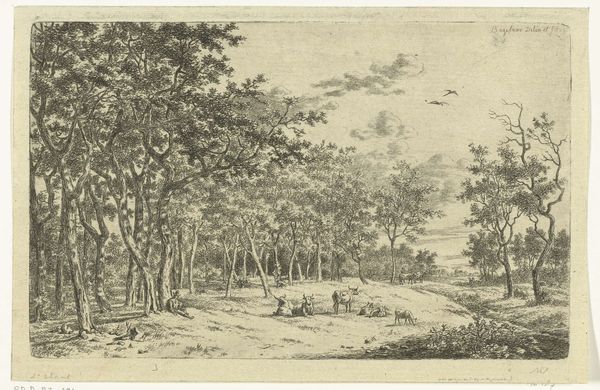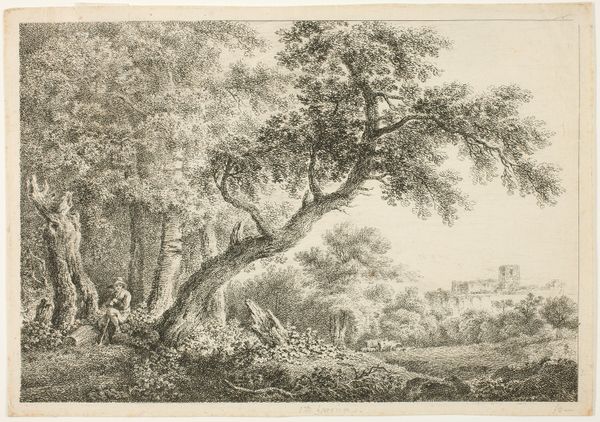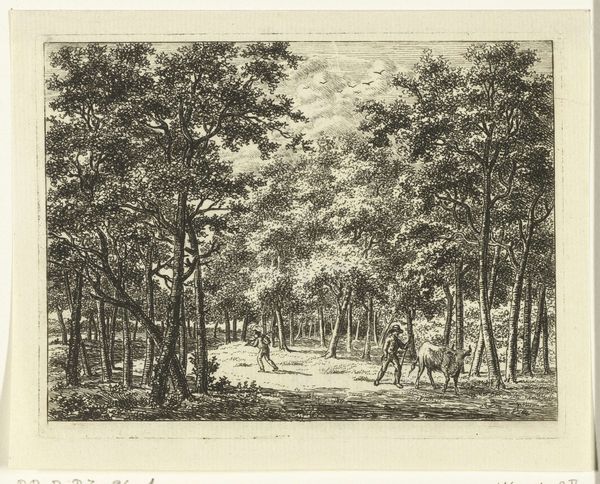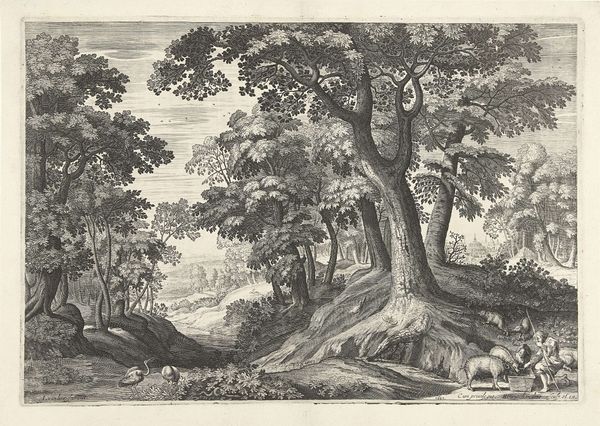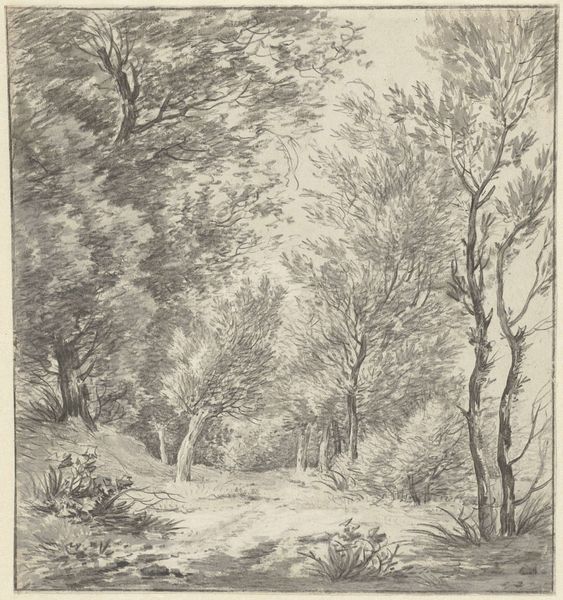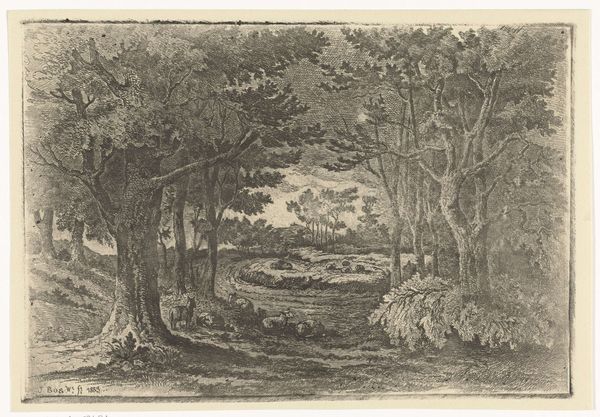
drawing, ink
#
drawing
#
baroque
#
dutch-golden-age
#
landscape
#
figuration
#
ink
#
pencil drawing
#
ink drawing experimentation
Dimensions: width 692 mm, height 448 mm
Copyright: Rijks Museum: Open Domain
Nicolaes de Bruyn made this print, 'Fifth Vision of Ezra,' sometime in the early 17th century, using the labor-intensive technique of engraving. Look closely, and you'll notice the lines are very fine, giving the scene a delicate, ethereal quality. Engraving involves cutting lines directly into a metal plate, which is then inked and printed. This was a highly skilled craft, demanding precision and control. The engraver wasn't just reproducing an image, they were interpreting it through the language of line. Here, the material qualities of the print—its stark contrast and intricate detail—heighten the otherworldly atmosphere of the biblical scene. Think of the engraver as a kind of translator, rendering the divine into something tangible. Considering the work involved in the production process allows us to appreciate the artistic labour required to create such a detailed image.
Comments
No comments
Be the first to comment and join the conversation on the ultimate creative platform.
